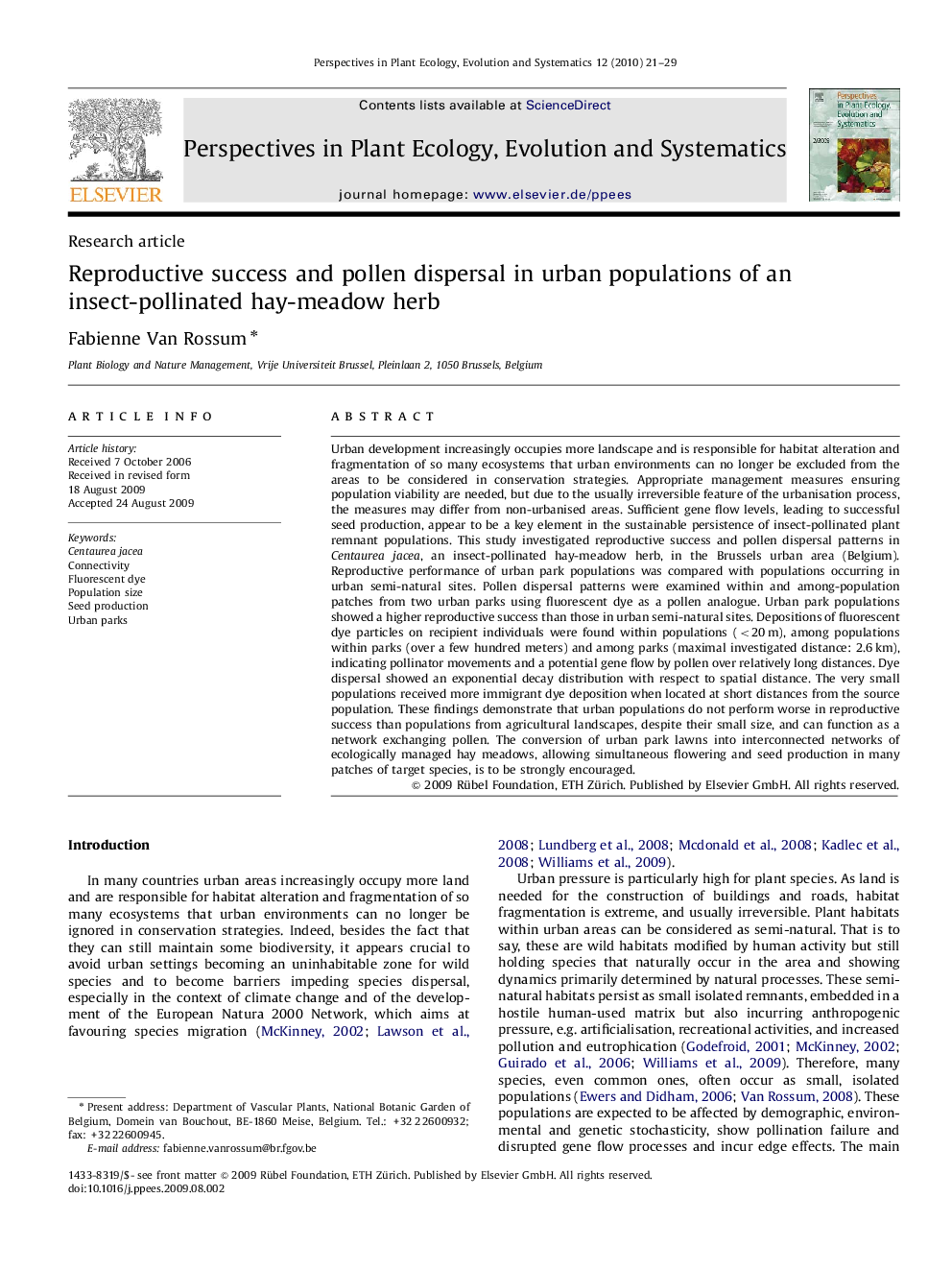| کد مقاله | کد نشریه | سال انتشار | مقاله انگلیسی | نسخه تمام متن |
|---|---|---|---|---|
| 4401249 | 1307075 | 2010 | 9 صفحه PDF | دانلود رایگان |

Urban development increasingly occupies more landscape and is responsible for habitat alteration and fragmentation of so many ecosystems that urban environments can no longer be excluded from the areas to be considered in conservation strategies. Appropriate management measures ensuring population viability are needed, but due to the usually irreversible feature of the urbanisation process, the measures may differ from non-urbanised areas. Sufficient gene flow levels, leading to successful seed production, appear to be a key element in the sustainable persistence of insect-pollinated plant remnant populations. This study investigated reproductive success and pollen dispersal patterns in Centaurea jacea, an insect-pollinated hay-meadow herb, in the Brussels urban area (Belgium). Reproductive performance of urban park populations was compared with populations occurring in urban semi-natural sites. Pollen dispersal patterns were examined within and among-population patches from two urban parks using fluorescent dye as a pollen analogue. Urban park populations showed a higher reproductive success than those in urban semi-natural sites. Depositions of fluorescent dye particles on recipient individuals were found within populations (<20 m), among populations within parks (over a few hundred meters) and among parks (maximal investigated distance: 2.6 km), indicating pollinator movements and a potential gene flow by pollen over relatively long distances. Dye dispersal showed an exponential decay distribution with respect to spatial distance. The very small populations received more immigrant dye deposition when located at short distances from the source population. These findings demonstrate that urban populations do not perform worse in reproductive success than populations from agricultural landscapes, despite their small size, and can function as a network exchanging pollen. The conversion of urban park lawns into interconnected networks of ecologically managed hay meadows, allowing simultaneous flowering and seed production in many patches of target species, is to be strongly encouraged.
Journal: Perspectives in Plant Ecology, Evolution and Systematics - Volume 12, Issue 1, 20 February 2010, Pages 21–29